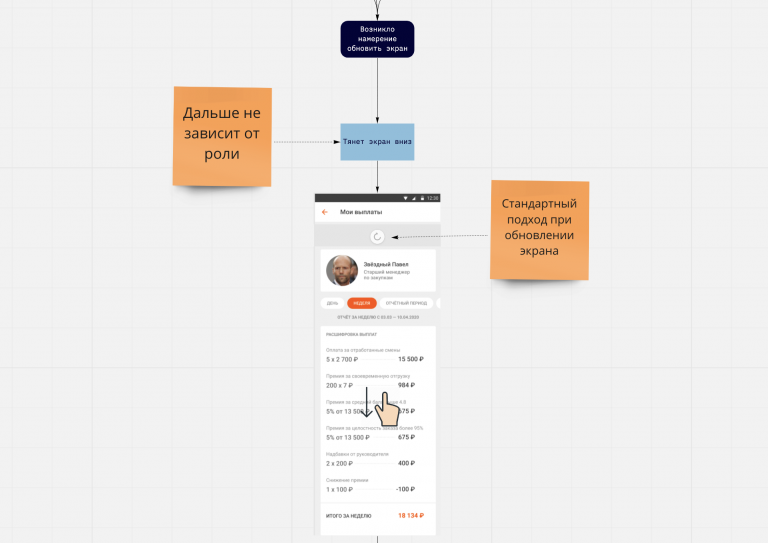How to conduct the evaluation stage of an IT project is how the project is implemented. Or the importance of project appraisal expertise
Every owner, regardless of the size of his enterprise, wants his profits to grow. Profit growth implies the growth of the business itself, an increase in the staff, means of labor, and an increase in the managerial load. For the effective operation of the enterprise, in this case, automation of business processes at all levels will be needed. No other way.
Automation is a project that brings the company to a new level of interaction with employees, customers, partners. Success in the market and profit directly depend on its success or failure, therefore, at the launch stage, the project needs to be evaluated, set tasks, and outline the ways and deadlines for their implementation.
What is a project appraisal method
A project is an undertaking within a company that is temporary. It is valid exactly as long as work is underway to create a product or service. It always starts with an idea and comes to its finale when:
the project has achieved its goals;
it becomes clear that the goals of the project cannot be achieved;
the project has lost its relevance in the eyes of the customer and the market.
In order to avoid risks, that is, not to go beyond the budget, not to fail the deadlines, not to make a low-quality product, not to develop unnecessary “features”, a project evaluation (EP) is needed.
OP is a way to find out how high the probability of completing a task within a certain time frame, moreover, qualitatively and without going beyond the budget.
Project evaluation is divided into:
idea evaluation. The stage of business and product concept formation. It helps justify the decision to launch the project, as well as its importance for the business.
project evaluation. This can and should be done at any stage from planning to completion. It serves to correct the progress of the project so as not to go astray.
Project evaluation methods
There are many methods for evaluating projects. Each company develops its own methods suitable for specific business conditions. For this reason, teams choose those methods that are most suitable for the specifics of projects, their complexity and duration.
The project work should take into account:
scheduled dates;
strict adherence to TK;
project charter;
systems for the assessment and reassessment of resources: temporary, financial and others.
Otherwise, the money will be spent, and the project will merge without reaching the goal.
The main reason for the emergence of problems with implementation is the lack of a system for evaluating and fixing agreements without prioritizing tasks.
Methods are quantitative and qualitative. Each has its own tools for implementing the assessment.
How the owner sees the automation of his business
Business owners, for the most part, think of business automation either as an unpleasant necessity that leads to unjustified costs, or as a panacea that will relieve all pressing problems. What they all have in common is that she makes them suspicious. It seems to be in vain.
Most likely, such owners see automation from a narrow position and they do not have the opportunity to evaluate all its advantages for their business, all its versatility and benefits. Thanks to IT technologies, the concept has expanded, and has long gone beyond the limits of automated workshops, tightly accustomed to the offices of companies, taking on almost all the functions of business process management.
Automation should now be considered as a set of measures that will allow scaling the business at all levels of management and production of services or goods.
In order for automation to fit comfortably on the shoulders of any company, it must be appropriate, expedient, not overloaded and accessible in terms of the turnover of the enterprise and the product.
Theoretically, business and business processes are equivalent concepts, since any business is a process in itself, where everything can be divided into sub-processes, stages and described. And, accordingly, in this view, business can be automated. But in fact, there are many activities in enterprises that cannot be called business processes, and processes either do not exist at all, or they are not optimized. Therefore, all work is spontaneous.
It suddenly becomes obvious that a large preparatory stage falls under automation, requiring analysis, description and preparation of the identified “raw” business processes.
The owner in automation should see three important universal goals that are relevant for any company.
The practical and obvious goal is saving. Having invested money in software, the enterprise can use it both to reduce costs and to increase labor productivity.
Speed up and streamline business processes for automation is the main task. Otherwise, why fence this whole garden. It magically makes processes streamlined and transparent, reduces the time for each operation, defines clear stages, deadlines and responsible comrades.
Increasing business transparency. Automation creates a unified information system. Inside it:
staff works with clients and with each other, does not conflict due to the division of clients, follows an individual KPI;
clients receive timely service with high quality;
supervisor sees the actual result of the activities of employees.
Automation really helps to scale a business, almost limitlessly, since the emergence of new business processes is easily integrated into an existing working system.
How the real scale can only be determined at the project appraisal stage
There are 2 main criteria for evaluating the scope of a project:
The number of users to be automated.
Complexity, atypicality, nature of the processes to be automated.
Let’s give a couple of examples.
One organization has many simple and typical processes. In this case, the implementation of automation is divided into stages, which simplifies the organization of the implementation process.
The second company has only two processes, for example, but they have a complex branched structure. There is an automation of non-standard processes that affect the work of the entire enterprise and many stakeholders are involved.
The vision of scale appears during the evaluation period of the project, when:
A goal is set, ways to achieve it are planned.
The problem of the project is posed and substantiated.
Determine the depth of the topic.
Determine the number of information sources and how expedient to use them.
Determine the budget for the project.
Determine the processes that need to be automated.
Analyze the selected ways of working on the goal for compliance with the project.
As a result of the assessment, the scale of the project and a real vision of the result are revealed based on an analysis of the market, competitors, consumers (how much they need the product), price category, the company’s ability to implement the project, etc.,
In order for a business automation project to give the necessary results, and the assessment does not look like a pure formality, an expert assessment of the project is required. This work can be carried out by specialists with extensive experience in such activities. It will be an independent view from the outside, allowing you to see all the processes of your business and determine the real time frame for the implementation of automation.
Our goal is to create smart and intelligent systems that can analyze, predict and automate processes to take your company to a new level of success.




